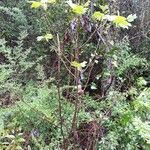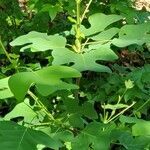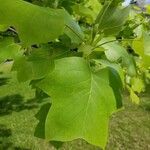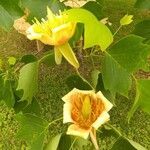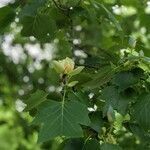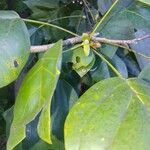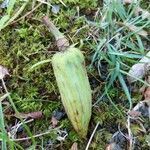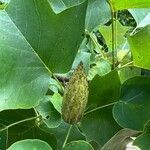It is a large tree. It loses its leaves during winter. It grows 25-35-60 m tall. The trunk is 1 m across. The young bark is smooth but later develops rough ridges. The leaves are alternate and simple. The leaves have four lobes. They are 7-12 cm long. The leaves are dark green. They have shallow notches at the tip. They turn yellow in autumn. The flowers are tulip-shaped and pale green. They are 5 cm across. The fruit are winged and 3-5 cm long. They are spindle shaped and look like a bud. It breaks up into winged seeds.
Sturdy tree to 60 m; lvs long-petioled, 8–14 cm long and about as wide, broadly retuse; fls solitary at the ends of the branches; sep pale green; pet 4–5 cm, greenish-yellow, with a large basal orange blotch within; frs narrow and elongate, 3–4 cm; 2n=38. Rich woods; Vt. to s. Mich., s. Ill., and se. Mo., s. to Fla. and La., often cult. May, June.
